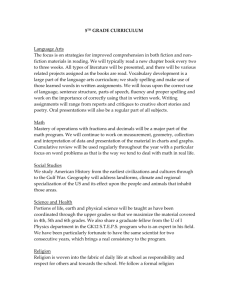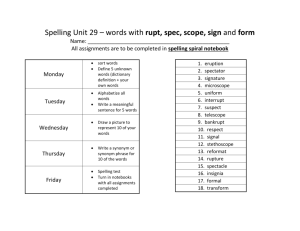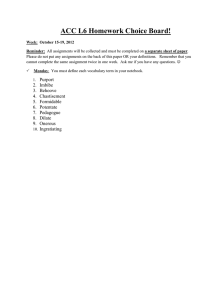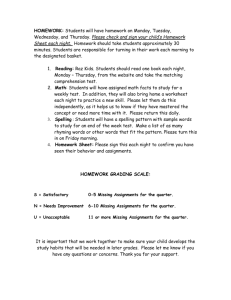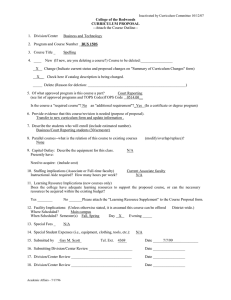PROVIDING EFFECTIVE NOTES Appearance of Notes
advertisement
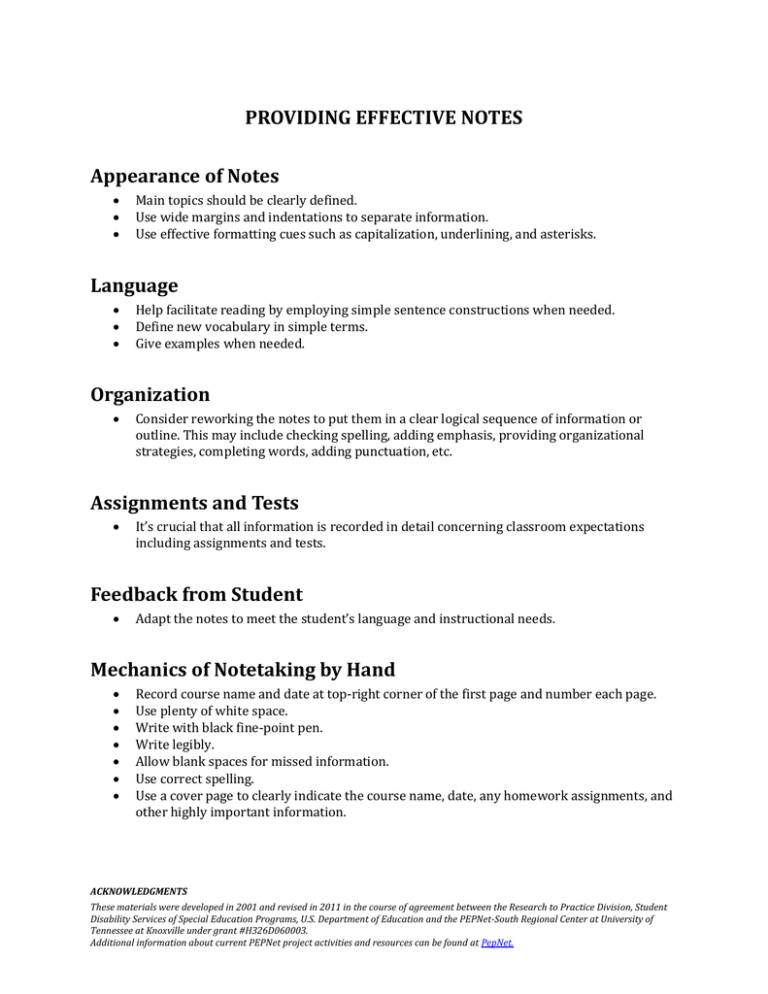
PROVIDING EFFECTIVE NOTES Appearance of Notes Main topics should be clearly defined. Use wide margins and indentations to separate information. Use effective formatting cues such as capitalization, underlining, and asterisks. Language Help facilitate reading by employing simple sentence constructions when needed. Define new vocabulary in simple terms. Give examples when needed. Organization Consider reworking the notes to put them in a clear logical sequence of information or outline. This may include checking spelling, adding emphasis, providing organizational strategies, completing words, adding punctuation, etc. Assignments and Tests It’s crucial that all information is recorded in detail concerning classroom expectations including assignments and tests. Feedback from Student Adapt the notes to meet the student’s language and instructional needs. Mechanics of Notetaking by Hand Record course name and date at top-right corner of the first page and number each page. Use plenty of white space. Write with black fine-point pen. Write legibly. Allow blank spaces for missed information. Use correct spelling. Use a cover page to clearly indicate the course name, date, any homework assignments, and other highly important information. ACKNOWLEDGMENTS These materials were developed in 2001 and revised in 2011 in the course of agreement between the Research to Practice Division, Student Disability Services of Special Education Programs, U.S. Department of Education and the PEPNet-South Regional Center at University of Tennessee at Knoxville under grant #H326D060003. Additional information about current PEPNet project activities and resources can be found at PepNet.


